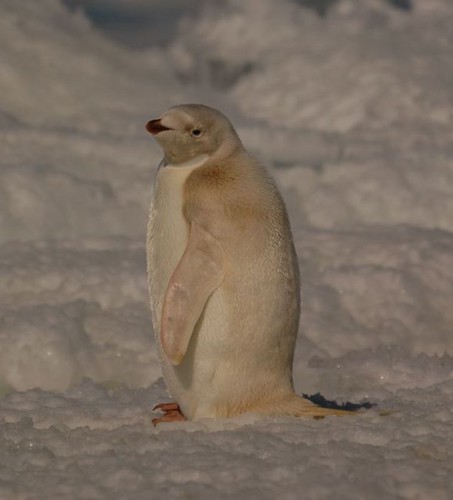
An individual Adélie penguin, Pygoscelis adeliae, that lacks all pigment was recently photographed by Australian biologists near Granholm Hut in Antarctica. Penguins and other birds that lack pigmentation are referred to as "leucistic" by ornithologists. These abnormal white birds rarely survive until adulthood because they attract predators and may not be able to find a mate. Amazingly and against all odds, the penguin that was photographed is an adult.
Adélie Penguins are common along the entire Antarctic coast and nearby islands. Aside from the storm petrel, they are the most southerly distributed of all seabirds. The female typically lays two eggs which are either brown or green in color. The parents take turns incubating the eggs in December, which averages about -2°C -- the warmest month in Antarctica. The parent who is incubating does not eat. Adélie penguins feed on Antarctic krill during the chick-rearing season, supplemented by Antarctic silverfish and squid. The adults return to the sea with their young in March.
Rhonda Pike, who is an Australian Antarctic Division biologist, said that only one all-white penguin has been observed over a number of breeding seasons in a population of 4,000.
"We have a population of tagged birds out there and we've never tagged any of the leucistic birds," said Pike. "So we don't know if it's the same one coming back year after year, but yeah, one out of 4,000."
-scienceblogs.com


 Similar Threads
Similar Threads
